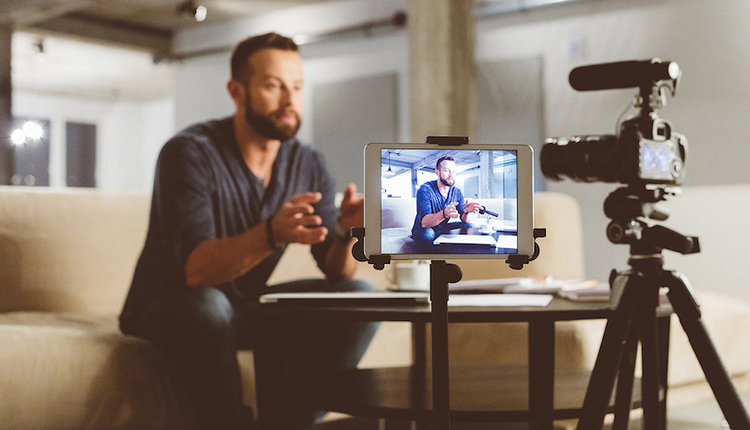
Fitness professionals have experienced a sharp pivot in recent months — from live group fitness experiences and one-on-one coaching to the world of virtual fitness. As gym closures began to hit the industry, many fitness professionals quickly hopped onto Zoom, Facebook and Instagram in an effort to stay connected with their participants and serve their clients’ needs.
Yet prior to this pandemic, many coaches had minimal experience “coaching to the camera.” The result? A bumpy learning curve with less than smooth sailing. The skills and tools needed to teach to a camera or screen are not the same as those used for a live group fitness class. In fact, both can be quite different and require a different “toolbox” to successfully engage, coach and motivate in this digital space.
Here are four tips to help you navigate this massive wave of virtual fitness:
1. Content Mastery
Of course, whether a fitness experience is live or not, content is key. Having a workout class plan with details mapped out in terms of exercises, movement patterns and blocks is and will always be a non-negotiable.
However, when delivering that content to the camera, this map needs to be refined and as seamless as possible. The coach’s job is to ensure everyone can follow successfully and that means modifications, regressions and progressions are an absolute must. Plan out the content, know what options to provide, practice each move and sequence to ensure the flow. By mastering your material, a strong foundation is built.
2. The Art of Coaching to the Camera
Coaching is no doubt the “secret sauce” that creates a unique fitness experience. Most fitness professionals would agree that though content is essential, the art of coaching is what ultimately sets the bar higher. Coaching is our way of expressing the what, how and why of each combination, exercise or sequence. It drives the participant’s intensity, motivation and desire to push just a little more.
But coaching to the camera involves a new skill set: the art of coaching to what we do not see. The face-to-face reality of a live class does not exist when teaching to a screen. Depending on the platform used, sometimes the coach will not even see the participant. Set in a space with no visual feedback to help correct form, range of motion or intensity, the instructor needs to rely on his/her live class experience to help shape coaching cues. Whether coaching knee tracking in a lunge, hand and shoulder placement in a push-up or how to safely land a tuck-jump, all these require unique cues.
As a coach, one of the best ways to help hone this “camera coaching” skillset is to visualize what you would normally see in a live setting. Increase the use of descriptive cues which offer the kinesthetic “feel” of different exercises. Coaching to the camera is an art; it requires creativity and experience to master with confidence.
3. Body Language and Facial Expressions
It is estimated that more than 60% of what we communicate comes from our body language. In other words, we learn, feel and understand based on messages we perceive are being communicated through gestures and facial expressions. On camera, this is of paramount importance.
A fitness professional’s energy, smile and eye contact should be felt “on the other side.” The participant needs to feel that energy and craves this connection. Yet, the camera lens offers minimal to no energy exchange; there is no reciprocal smile, wink or “high-five.” These subtle yet significant nuances that make a live class experience unique are no more.
Be mindful of this shift in energy output since it is demanding and potentially exhausting. This is another reason why content preparation is crucial. Energy must be spent on delivery with a smile, locked eyes to the camera and masterful coaching cues for the entire duration of that class.
4. Technology Tools
Obviously, technology is the glue that holds virtual fitness together. Regardless of the platform used, basic standards and best practices apply. Proper lighting along with adequate sound quality are two non-negotiables. A filming studio with professional lighting and editing is wonderful but not necessary to yield a solid virtual fitness class. Some basics include ensuring a clear space with minimal distraction in the background.
A cluttered scene will distract and potentially frustrate participants. Likewise, adequate lighting is critical since most people are visual leaners. Finally, test the space used and sound prior to filming or live steaming to ensure your full body is in the frame and your voice is clear. These details make a significant difference and help create a professional virtual class experience that is not only effective but enjoyable, too.
Most would agree that virtual fitness is here to stay. The skills needed to “coach to the camera” however, may seem daunting. This toolbox requires content mastery, unique coaching cues and high energy coupled with some tech-savvy skills. Definitely, no easy feat! But with practice, self-feedback and an authentic desire to coach, lead and motivate others, these skills are well worth the effort!
















